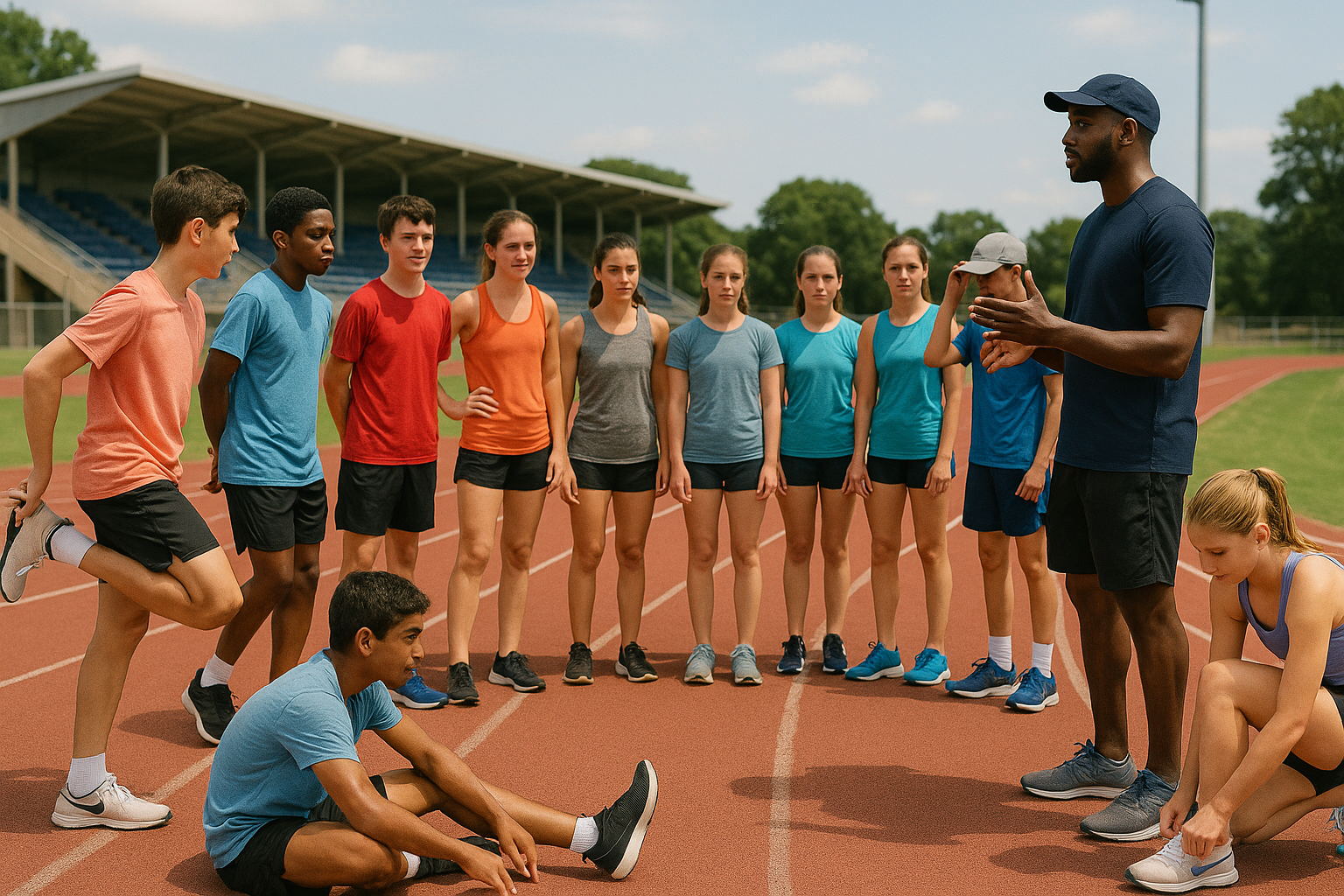If your child plays football, soccer, baseball, lacrosse, or track and field, there’s one athletic quality that consistently sets top performers apart: speed. Speed wins races. Speed breaks through defensive lines. Speed turns good athletes into game-changers. But here’s something many parents don’t realize: speed isn’t just a talent, it’s a trainable skill, especially during the summer months when athletes have time to focus on individual development. This article will walk you through why summer is the golden window for sprint development, what actually creates faster athletes, and how investing in proper sprint training now can impact your child’s success, not just in track, but in every sport where explosiveness and acceleration matter.
During the competitive season, coaches juggle multiple goals, game plans, team conditioning, technical drills, and individual sprint mechanics often get pushed aside. That’s why summer is the prime time to zoom in on sprint development. Without the interference of in-season stress and performance demands, athletes can focus on correcting biomechanical errors, improving sprint form and running economy, building neuromuscular explosiveness, and laying down the foundation for faster reaction times and shorter ground contact. In short, summer training is not just “extra”, it’s essential for athletes who want to rise above the competition.
Parents often think their child is either “born fast” or “just not built for speed.” That’s outdated thinking. Modern sports science shows us that speed is largely determined by two trainable factors: running mechanics and biomechanics, and the power-to-ground transfer (explosiveness and plyometric reactivity). Let’s break these down.
At its core, sprinting is a skill, and like any skill, it can be taught, refined, and mastered. Many young athletes run inefficiently because no one has ever shown them how to sprint properly. Common issues include overstriding (reaching too far forward, causing braking forces), poor posture (slouched shoulders, weak core engagement), low knee drive and limited range of motion, excessive vertical bounce (wasted energy), and inconsistent arm action (which throws off timing and rhythm). Correcting these errors is not about working harder, it’s about moving smarter. A qualified sprint coach focuses on posture (a tall, neutral spine with slight forward lean from the ankles), arm mechanics (compact elbows, driving hands from cheek to hip), leg cycle (efficient hip flexion, powerful extension, and quick turnover), and foot strike (landing under the hips for minimal ground contact time). When biomechanics are sound, force gets transferred more efficiently, meaning more speed with less wasted energy.
Speed is the product of two variables: speed = stride length x stride frequency. This formula might sound simple, but optimizing both elements is a science in itself. Stride length is the distance covered with each step. Stride frequency is how quickly an athlete takes each step. Athletes can’t just try to run with bigger steps, over-striding leads to injury and slower ground turnover. And simply “moving your legs faster” doesn’t guarantee gains if those steps are short and inefficient. The key is to optimize the stride ratio, meaning the perfect balance between stride length and frequency that creates maximum forward momentum with minimal energy loss. That balance is only achieved when the athlete has solid hip mobility, muscles are trained for rapid force production, sprint mechanics are clean and repeatable, and plyometric training has built elastic, reactive strength. A good coach helps an athlete find their natural stride signature, then fine-tunes it over time. That’s where real speed is built.
Want to know the hidden factor behind every fast sprinter? It’s not just strong legs. It’s reactive strength — the ability to generate explosive force in a split second and bounce off the ground with minimal contact. That’s where plyometric training comes in. Plyometrics include exercises like bounding, skipping, hops, depth jumps, and single-leg drills. These movements train the stretch-shortening cycle, the rapid loading and unloading of muscles that mimics real sprinting. Here’s what effective plyometric training delivers: faster ground contact (the less time your child spends on the ground, the faster they go), improved force transfer from hips and glutes into the track or turf, and greater stride stiffness, which means less energy wasted in each step. Plyos must be done progressively and correctly to be safe and effective. They’re not just “jumping around”, they’re biomechanics drills that prepare an athlete’s body to explode forward like a coiled spring.
Lifting weights is great for general strength, but it won’t automatically make your child faster. Speed training is movement-specific, which means the body must be trained to produce force in the exact angles and sequences required for sprinting. This is where a lot of youth programs miss the mark. They focus on general fitness, squats, push-ups, circuits, but they neglect movement education. A real speed program is not just conditioning, it’s a technical skill-development system, one that includes sprint drills that break down proper running form, acceleration mechanics (how to explode off the line), max velocity training (how to hold top-end speed with efficiency), and drill-to-sprint transitions to solidify habits under real sprint conditions. When done right, this kind of training not only makes your child faster, it also reduces their risk of injury.
Speed training isn’t just for track athletes. Nearly every field and court sport demands short bursts of explosiveness, whether it’s a first-step sprint, a defensive recovery, or a breakaway run. Here’s how speed development carries over: football, faster 40-yard dashes, improved acceleration out of cuts; soccer, more explosive takeoffs, quicker recovery runs; baseball/softball, faster steals, better outfield range, quicker reactions; basketball, lightning-fast fast breaks, better close-outs; lacrosse, increased foot-speed, more dynamic dodges and cuts. If your child wants to compete at the next level, high school varsity, college, or beyond, elite speed is a non-negotiable.
Not all summer camps or “speed clinics” are created equal. Some focus more on general fitness than actual sprint technique. Here’s what to look for: biomechanics-based training, does the program teach form, posture, and sprint mechanics? Plyometric integration, are reactive drills included with proper progression? Speed-specific coaching, is the coach experienced in sprint science, not just conditioning? Individual feedback, does the program offer video analysis, corrections, and tailored cues? Safety and recovery awareness, are workloads appropriate for age and development? A high-quality summer sprint program should leave your child not only faster, but also more confident, educated, and technically sound.
Here’s the hard truth: if you wait until tryouts or the first week of practice to “get faster,” it’s already too late. Speed is a long-term skill, and the athletes who make the biggest gains are those who train before the spotlight is on. As a parent, you have the power to give your child the developmental edge that others overlook. Summer is when great athletes are made, not by chance, but by design. Give them the tools. Trust the process. And watch them take off.
To recap: speed is trainable and essential across nearly every sport. Biomechanics and proper form are the foundation of faster, more efficient movement. Stride length and stride frequency must be balanced to reach max speed. Plyometrics and reactive drills build ground contact speed and explosive force. Summer provides the ideal window for technical improvement without in-season interference.
If you’re serious about helping your young athlete maximize their potential, don’t wait. Find a certified sprint coach or program that focuses on technique, biomechanics, and progressive development, not just running laps or lifting weights. A faster athlete is a more confident, dynamic, and game-ready athlete. Start this summer. Watch them soar next season.

